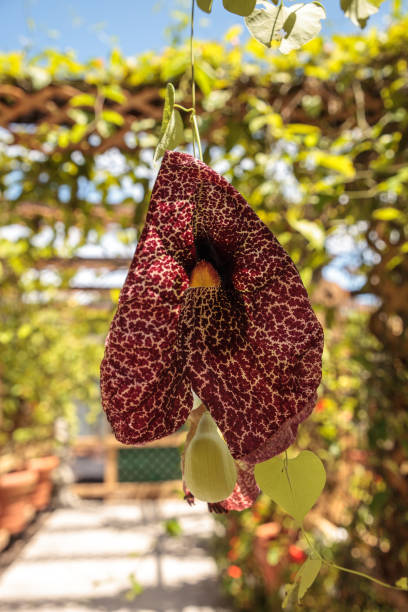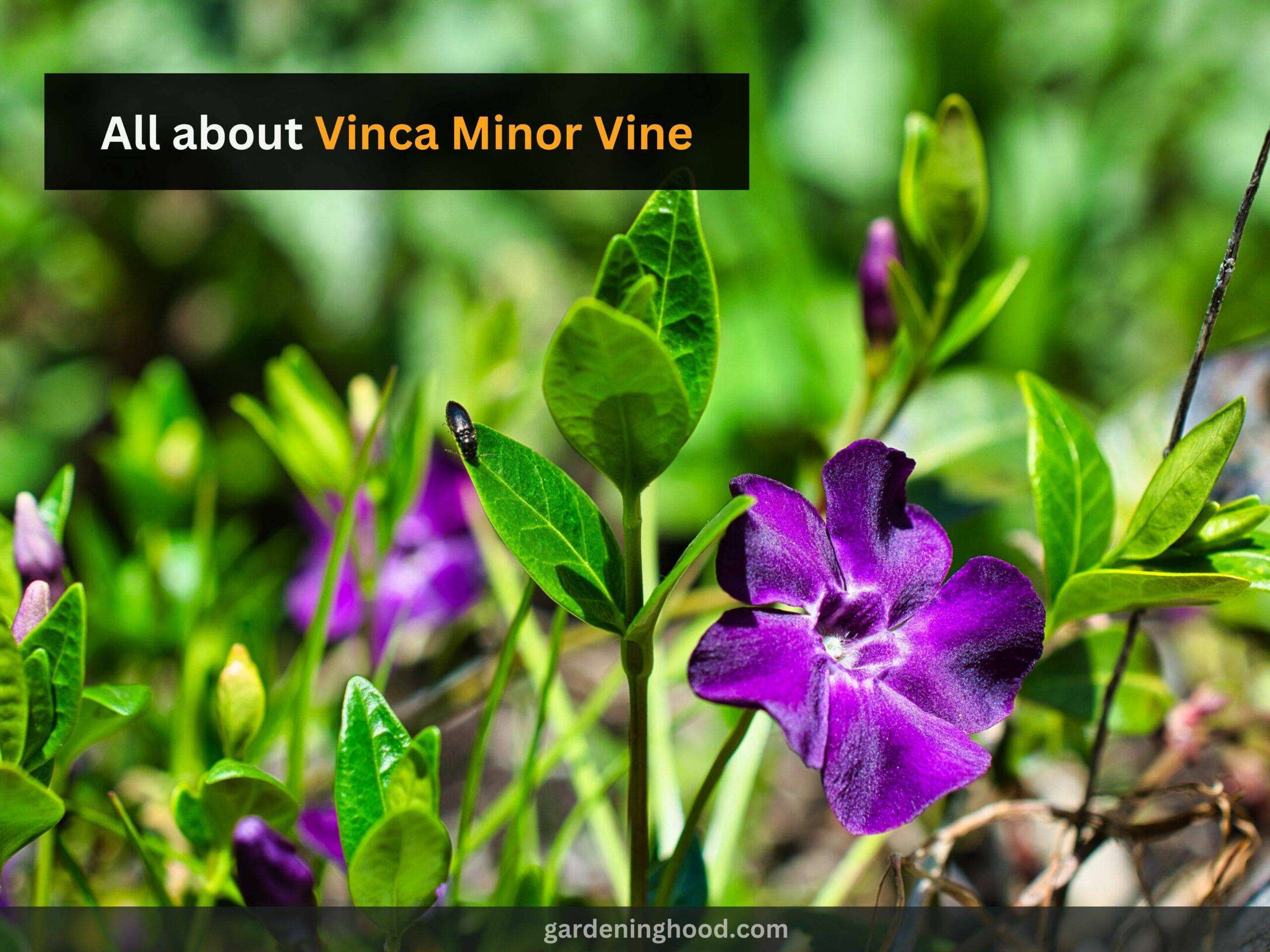What is Dutchman’s Pipe Vine? How to Grow, Care, and Prune Dutchman’s Pipe vine?
Are you looking to grow a unique plant? What if I tell you I have a great option for you? I am sure you will be excited and interested to know what it is.
Here I am talking about Dutchman’s pipe vine. Trust me, you will be happy to see the results, as I was. Now, of course, the question is how to grow Dutchman’s pipe vine?
Don’t worry, if I am introducing Dutchman’s pipe vine, there is no need to struggle, as here I have explained all the implemented methods that will help you not only with the steps to grow them but also with how to take care of Dutchman’s pipe vine. So let’s learn how to cultivate Dutchman’s pipe for a one-of-a-kind plant that will be the talk of the neighborhood.
Quick takeaways:
- The vine is normally only 10 to 15 feet (3-4.5 metres) long, but under ideal growth circumstances, it may reach a length of 25 feet (7.5 metres).
- A trellis or vertical framework is needed to support the twining stems and broad leaves of a Dutchman’s pipe.
- Information on the Dutchman’s Pipe Pipe vine is another name for the plant, which grows well in USDA zones 8 to 10.
- The blossoms have a decaying flesh stench that attracts pollinating insects. there are varieties of vines that you can grow in your gardens like Sweet Potato vines, Vinca Minor Vine, Angel vines, etc.
- The plant is a woody vine with bent pipe-shaped blooms and huge heart-shaped leaves.
| Common Name | Dutchman’s pipe vine, pipe vine |
| Botanical Name | Aristolochia macrophylla |
| Family | Aristolochiaceae, Birthwort |
| Plant Type | Vine |
| Mature Size | 15–30 ft. tall, 15–20 ft. wide |
| Sun Exposure | Full, partial |
| Soil Type | Moist, well-drained |
| Soil pH | Neutral, acidic |
| Bloom Time | Summer |
| Flower Color | Yellow, green, purple |
| Hardiness Zones | 4–8 (USDA) |
| Native Area | North America |
| Toxicity | Toxic to people |
All about Dutchman’s Pipe Vine
Pipe vine is another name for the plant, which grows well in USDA zones 8 to 10. The vine is normally only 10 to 15 feet (3 to 4.5 meters) long, but under ideal growth circumstances, it may reach a length of 25 feet (7.5 meters). A trellis or vertical framework is needed to support the twining stems and broad leaves of a Dutchman’s pipe.
Along a woody stalk, the huge heart-shaped leaves alternate. Late spring and early summer are the best times to see the blooms. They have a plum tint to them with speckles. A fascinating fact about the Dutchman’s pipe is that it was formerly used as delivery assistance due to its similarity to a human fetus.
Another of the vine’s names is birthwort, which refers to this feature. Swallowtail butterflies lay their eggs on Dutchman pipe vines, which also provide a home for helpful insects.
Types of Dutchman’s Pipe
Below are the types of Dutchman pipe that can be easily grown in a home garden. They are as follows:
Wooly Dutchman’s Pipe
- This variety is scientifically known as Aristolochia tomentosa.
- It is native to the central and Southern United States.
- Its USDA zone is 5 to 8.

White-Veined Hardy Dutchman’s Pipe
- Another variety of Dutchman pipe is white-veined Hardy Dutchman pipe which will suit best as a ground cover.
- This variety is a perennial, not a vine.
- You observe that this plant will grow about 6 to 12 inches long and spread about 2 to 3 feet.
- It tends to produce heart-shaped leaves in the plant that are green in color.
- Its USDA hardness growing zone is 7 to 9.

Virginia Dutchman’s Pipe
- It is another variety of Dutchman pipe that can be beautifully used as a ground cover.
- It is a native to the United States.
- You can grow them in the full shade, to partial shade, depending on the location you’re placing them.
- Its USDA hardness growing zones are 5 to 9.

Growing Dutchman’s Pipe Vine
Dutchman’s pipe grows best in sunny to partly sunny situations with wet but well-drained soil. This vine should be planted downwind of your entryway. The blossoms contain a range of foul odours, most of which resemble carrion. This terrible stench is appealing to bugs that pollinate the blooms, but it may be annoying to you and your guests.
A Dutchman’s pipe may be grown from seed. After the seed pods have dried on the plant, harvest them. Sow them in seed flats indoors and then transfer them outside once the soil has warmed to at least 60 degrees F. (15 C.). Stem cuttings are a more popular method of propagating a Dutchman’s pipe vine. Take them in the spring when the terminal growth is young and place them in a glass of water to root.
To avoid bacterial build-up, change the water every day and transfer the stem to the soil after it has a dense clump of roots. For immature plants, Dutchman’s pipe care necessitates vertical training. For a year or two, you may try cultivating a Dutchman’s pipe vine in a pot. Select a big pot and set it in a protected area.
“Plant trees. They give us two of the most crucial elements for our survival: oxygen and books.”
– By A. Whitney Brown
Caring for Dutchman’s Pipe Vine
- Water is the most important aspect of Dutchman’s pipe vine maintenance. When caring for pipevines in pots, don’t let the soil dry up entirely. Supplemental watering is also required for plants in the ground.
- To keep the plant under control, fertilize it once a year in the spring and trim it as needed. To produce thicker plants, pinch back juvenile growth.
- Dutchman’s pipe may need to be pruned to keep its growth under control. The plant is not cold-resistant, but in warmer regions, it will grow as an evergreen vine Dutchman’s pipe vine seeds to grow in your garden.
- The plant may be cultivated in a greenhouse in most USDA growing zones. If a frost threatens your outside plants, mulch around the bottom to safeguard the roots.
- When the weather warms up in the spring, the plant will leaf out again and yield beautiful blooms.
The vine does not have any severe insect or disease concerns, but you should constantly keep an eye on your plants and cure any problems as soon as they appear.

Pruning Dutchman’s Pipe vine
There are a few reasons why you should prune Dutchman’s pipe vine.
- To begin, removing damaged or diseased wood from your Dutchman’s pipe plant allows the plant to receive more air, which helps to avoid illness.
- Because the plant is revitalized, Dutchman’s pipe trimming also enhances bloom output.
How to Prune a Dutchman’s Pipe and When to Do It?
Pruning a Dutchman’s pipe isn’t difficult or time-consuming. When you wish to get rid of any dead or infected branches, you may undertake some light pruning. Cleaning up the Dutchman’s pipe vine by eliminating broken or crossed branches will improve the appearance of your vine.
After the vine has finished flowering in the summer, you may undertake more extensive Dutchman’s pipe pruning. You may now trim back part of the old vegetation to the ground and chop back the sprouts. This makes the plant a little more hardy for the following season.
Sucker pruning can also be done now by removing part of the blossoms that emerge on the previous year’s wood. To put it another way, half of the blossoms on aged wood should be removed.
This results in a healthier planet and a longer growing season. Picking suckers from your tomato plants or cherry trees is essentially the same thing.
Remember that depending on what you’re trimming your Dutchman’s pipe plant for, you may prune it at any time of year. Pruning a dutchman’s pipe is simple and requires just common sense. This is a task that anyone can do, and everyone can find out what the plant requires. Dutchman’s pipe plants are extremely tough and can withstand just about anything you throw at them.
Where to Plant Dutchman’s Pipe?
Planting Dutchman pipe in the location, they desire to grow in, will help you to receive a healthy plant. yes, you have to plant the Dutchmen’s pipe in a location where they can receive full sunlight to partial shade.
The place should be sheltered so that no cold drafts will destroy the vegetation. The soil will be used in planting. This plant should be well-drained and moist at the same time. The pH level of the soil should be slightly acidic to slightly alkaline.
Being a fast-growing vine, It will spread fast so you can plant it a little away from your home. Last, but not least, its leaves will form a dense texture and will look attractive in your garden area.
Common problems with Dutchman’s Pipe
Some of the problems that are being faced by the Dutchman pipe are explained in the below guide, so you have to understand them properly so that you come to know about the best solutions for saving your plant. They are as follows:
- Brown spot
- Leaf miners
- Leaf beetles
Let’s get started to know more about these problems in detail:
Brown spot
- One of the problems faced by the Dutchman pipe is the brown spot on the leaves.
- If it is at the earliest stage, then you can treat them but if it’s huge then it becomes tricky to treat them.
- If more of your foliage is affected by the brown spot on the plant.
- Then you have to get rid of them as soon as possible by making use of horticulture oils, such as Neem oil.
Leaf miners
- Another common problem faced by the plant is the leaf miners.
- It will put scars on the leaves with its white streaks.
- So when you observe white sports on the brown centers in your leaves, then you have to cure them.
- You have to spray the organic insecticide on the affected leaves so that the plant gets saved.
Leaf beetles
- Last, but not least leaf beetles the another issue faced by the plant.
- Leaf beetles are those insects that are 1 to 2 cm in size.
- They will produce small round holes in the leaves
- So you have to remove them by hand otherwise if it will spread more, then there is less chance of saving your plant.
About the article
Aristolochia macrophylla, or Dutchman’s Pipe Plant, is planted for both its distinctive blossoms and its leaves. It should be trimmed to remove any sprouts or old wood that are obstructing the plant’s appearance.
The Dutchman’s pipe should be pruned at specified periods of the year, so give heed to its flowering and growing habits. In this article, we discussed what a Dutchman’s Pipe vine is. We also discussed how to grow, care, and prune it.


